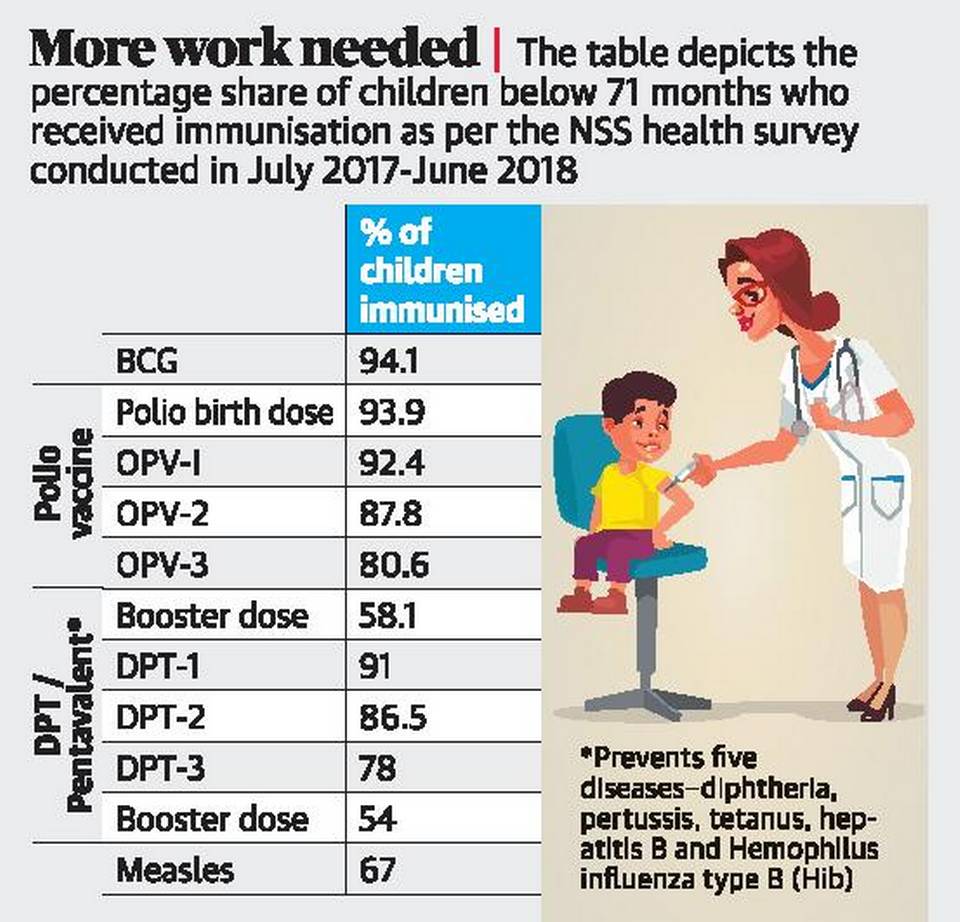Focus: GS-II Social Justice
Why in news?
- ‘Health in India’ report was recently published by the National Statistical Organisation (NSO).
- The report is based on the 75th round of the National Sample Survey (July 2017-June 2018) on household social consumption related to health.
Highlights
- Although almost all children in India are vaccinated against tuberculosis, and receive their birth dose of polio vaccine, two out of five children do not complete their immunisation programme.
- Most of these children remain unprotected against measles, and partially protected against a range of other diseases. In the national capital, less than half of all children have been given all eight required vaccines.
- Across the country, only 59.2% of children under five years are fully immunised, according to the NSO report.
- This contradicts the Centre’s Health Management Information System portal data, which claimed that full immunisation coverage for 2017-18 stood at 86.7%.
- About 97% of children across the country received at least one vaccination — mostly BCG and/or the first dose of OPV at birth — a statistic that remains steady across income groups and geographies.
- However, only 67% of children are protected against measles. Only 58% got their polio booster dose, while 54% got their DPT booster dose.
- The vast majority of these vaccinations — 95% in rural India and 86% in cities — were carried out in government health facilities and primary health centres which will be the same facilities used to distribute and administer the COVID-19 vaccine whenever it is made available.
How are children vaccinated?
Full immunisation means that a child receives a cocktail of eight vaccine doses in the first year of life:
- The BCG vaccine injected in a single dose shortly after birth, which protects against a childhood attack of tuberculosis;
- The measles vaccine; the oral polio vaccine (OPV) whose first dose is given at birth, followed by two more doses at intervals of four weeks;
- The DPT/pentavalent vaccine, generally injected in three doses, which is meant to protect a child from diphtheria, pertussis or whooping cough, tetanus, Hepatitis B, and meningitis and pneumonia caused by hemophilus influenza type B.
- Booster doses for OPV and DPT are also given between 16 and 24 months.

-Source: The Hindu



